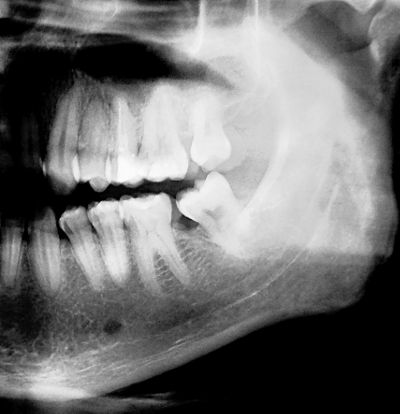Black Death dates pushed back
 Researchers have found the earliest known Black Death patient.
Researchers have found the earliest known Black Death patient.
The remains of a 5,000-year-old hunter-gatherer has been discovered to house the oldest known strain of Yersinia pestis - the bacteria behind the plague known as the Black Death.
The Black Death would eventually kill around half of Europe's population from the 1300s onwards. However, this new example comes from a 5,000-year-old hunter-gatherer, and appears to be of an older, less contagious and less deadly variant.
“What's most astonishing is that we can push back the appearance of Y. pestis 2,000 years farther than previously published studies suggested,” says senior author Dr Ben Krause-Kyora, head of the aDNA Laboratory at the University of Kiel in Germany.
“It seems that we are really close to the origin of the bacteria.”
The plague-carrying hunter-gatherer was a 20 to 30-year old man now known as ‘RV 2039’. He was one of two people whose skeletons were excavated in the late 1800s in a region called Rinnukalns in present-day Latvia.
Soon after, the remains of both vanished until 2011, when they reappeared as part of German anthropologist Rudolph Virchow's collection. After this re-discovery, two more burials were uncovered from the site for a total of four specimens, likely from the same group of hunter-fisher-gatherers.
Dr Krause-Kyora and his team used samples from the teeth and bone of all four hunter-gatherers to sequence their genomes and then tested them for bacterial and viral pathogens.
They were surprised to find evidence of Y. pestis in RV 2039, and after reconstructing the bacteria's genome and comparing it to other ancient strains, the researchers determined that the Y. pestis RV 2039 carried was indeed the oldest strain ever discovered.
It was likely part of a lineage that emerged about 7,000 years ago, only a few hundred years after Y. pestis split from its predecessor, Yersinia pseudotuberculosis.
“What's so surprising is that we see already in this early strain more or less the complete genetic set of Y. pestis, and only a few genes are lacking. But even a small shift in genetic settings can have a dramatic influence on virulence,” says Dr Krause-Kyora.
In particular, this ancient strain lacked one crucial thing: the gene that first let fleas act as vectors to spread the plague.
This gene was responsible for efficient transmission of the bacterium to human hosts, which resulted in the growth of the famously grotesque pus-filled buboes in the sick associated with the medieval bubonic plague.
Flea-based transmission also required the death of the human host, which means that the appearance of the gene could have driven the evolution of a deadlier disease.
From RV 2039, it likely took more than a thousand years for Y. pestis to acquire all the mutations needed for flea-based transmission. It is not clear to what extent RV 2039 experienced the effects of the plague at all.
Y. pestis was found in his bloodstream, meaning he most likely died from the bacterial infection, although the researchers think the course of the disease might have been fairly slow.
They observed that he had a high number of bacteria in his bloodstream at his time of death, and in previous rodent studies, a high bacterial load of Y. pestis has been associated with less aggressive infections.
Additionally, the people he was buried near were not infected and RV 2039 was carefully buried in his grave, which the authors say also makes a highly contagious respiratory version of the plague less likely.
Instead, this 5,000-year-old strain likely was transmitted directly via a bite from an infected rodent and probably did not spread beyond the infected person.
“Isolated cases of transmission from animals to people could explain the different social environments where these ancient diseased humans are discovered. We see it in societies that are herders in the steppe, hunter-gatherers who are fishing, and in farmer communities - totally different social settings but always spontaneous occurrence of Y. pestis cases,” says Dr Krause-Kyora.








 Print
Print